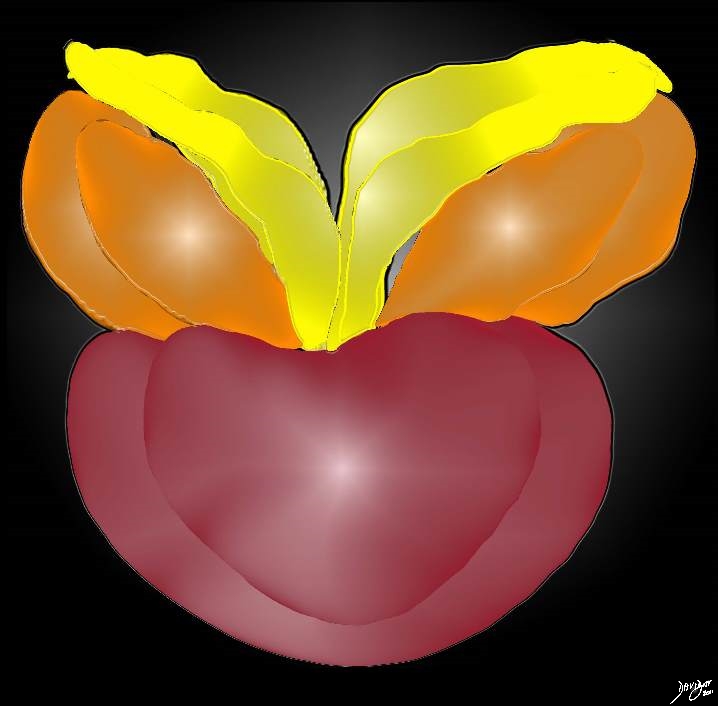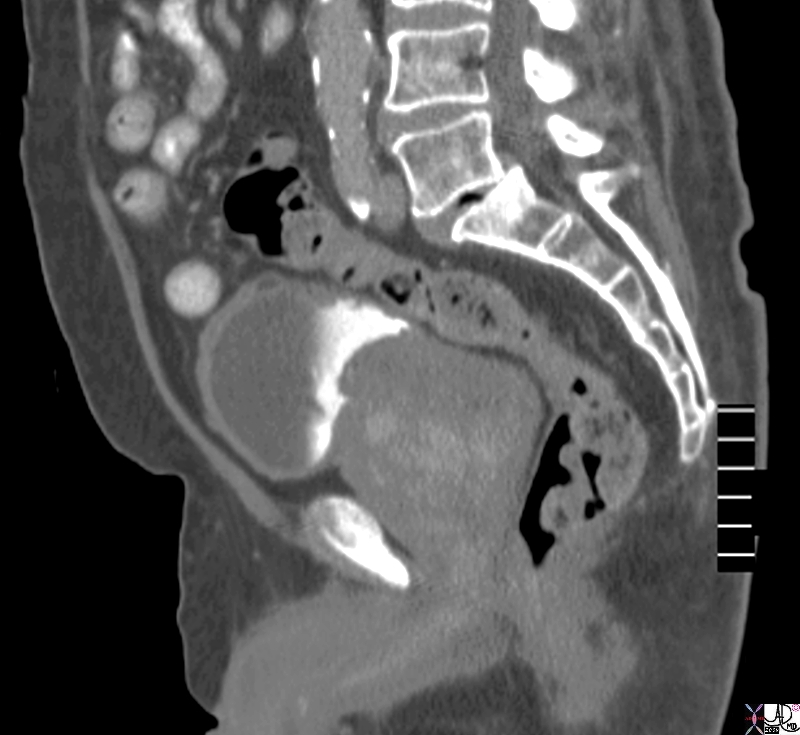The Common Vein Copyright 2010
Introduction
At birth the prostatic acini are lined with sqaumous epithelia.
Stimulation of further development of the gland is dependent on maternal steroids, namely estrogens. As the levels of these hormones decrease, an involutional phase ensues during the first 5 months. Large transient surges of serum androgen, estrogen, and progesterone normally occur very early in postnatal life. This is usually between 2 to 3 months of age. At this time, levels may reach upward of 60 times normal prepubertal levels, approaching adult serum testosterone levels.
The prostate increases rapidly in size at puberty. During the fifth decade, it starts to show the effects of aging either resulting in atrophy but more commonly hyperplasia.
|
Getting Older and Bigger The Story of the Prostate |
|
The artistic rendition is of the normal prostate enlarging with time most commonly due to hyperplasia of the transitional zone. The diagram shows the normal cone shaped gland in maroon in the center with the ductus deferens (yellow) and seminal vesicles. The normal prostate is about the size of a kiwi fruit usually weighs between 20-30gms and has a maximum transverse diameter of 4cms, but can double in size Then I grew old… and bigger and then Like basketball in reverse, Image Courtesy Ashley Davidoff MD Copyright 2010 99380b03b.8s |
The prostatic age is the period in a mans life when he starts to experience the clinical manifestations of the aging prostate which in the past was called prostatism but is now referred to as lower urinary tracts symptoms (LUTS). These symptoms include frequency, urgency, hesitancy, poor emptying, nocturia, and dribbling.
|
Large Bilobed Smooth Gland – 70 years old |
|
The CTscan is from a patient with an enlarged prostate. The anterior aspect of the gland protrudes with two symmetrical homogeneous components likely representing an enlarged transitional zone and prostate hyperplasia though by the nature of the disease the combination of cancer and BPH commonly coexist. The urinary bladder wall is minimally thickened. Image Courtesy Ashley Davidoff MD Copyright 2010 25517b.8s |
|
Large Gland in the Sagittal Plane – 75 years old |
|
The CTscan reconstructed in the sagittal plane is from a patient with an enlarged prostate. The anterior aspect of the gland protrudes with two symmetrical homogeneous components likely representing an enlarged transitional zone and prostate hyperplasia though by the nature of the disease the combination of cancer and BPH commonly coexist. The matrix of the gland is heterogeneous The bladder wall is thickened anteriorly. Image Courtesy Ashley Davidoff MD Copyright 2010 76771.8s |



